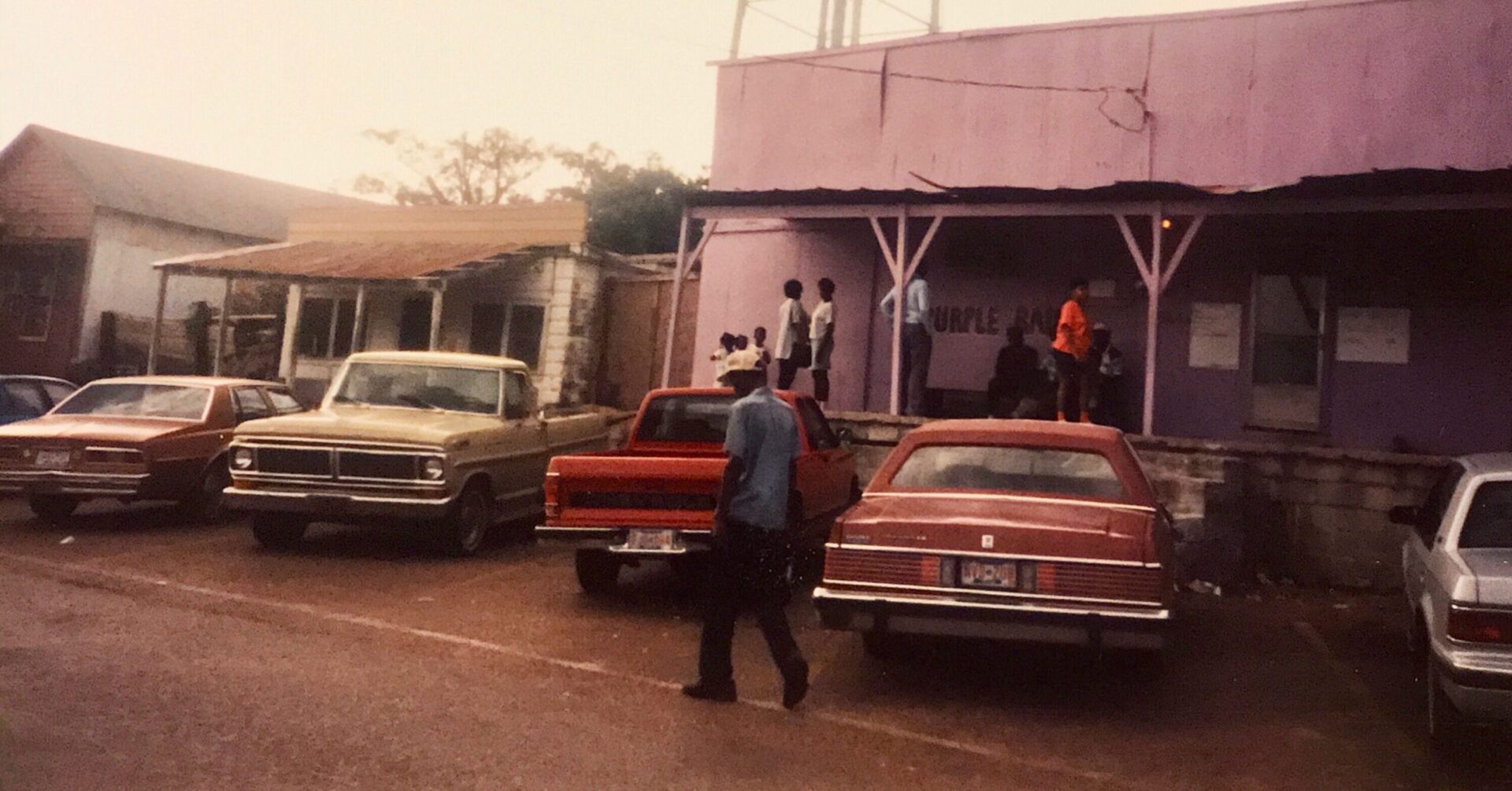There has been some sort of talk about redeveloping Farish Street since 1983, so it was absolutely disheartening to see the sorry state of the street here in 2013. “Redevelopment” seems to have consisted of fencing off the first block of the street and placing gates at either end. The one new business on the street, F. Jones’ Corner, is a booming and going concern, but it was opened by private initiative a few years ago. Aside from a few new historic markers, the rest of the street is rapidly collapsing, and soon there will be nothing left to redevelop.
One large building on the right-hand side of the street as I faced north had a faint painted sign still visible near its roof which read “Palace Auditorium.” The man sitting on the bench in front of it explained to me that it had once been “Caesar’s Palace Auditorium”, but that when city officials had discovered that the owner Caesar was Black, they made him remove his name from it. The man with whom I was speaking told me that he was the proprietor of Dennis Brothers Shoe Service across the street, one of only three Black-owned businesses which remain in the historic district. “The redevelopment is just an effort to get us out of here so that the white folks can take over,” he said. “They need to tear it all down. They’ve waited too late.” Indeed many of the buildings show signs of roof damage, or in some cases, total roof collapse.
Walking with him over to a large concrete marker that read “Brown’s Circle”, I asked him about it. He said that there had been a residential area on the next street over, known as Young’s Alley, and that Brown’s Circle was a street leading to it, and that it also had a residential area.
Aside from some Kappa Alpha Psi fraternity members who were having a function at the Alamo Theater, and the handful of people inside Peaches’ Restaurant, Farish Street was largely devoid of people on a Saturday afternoon. Up the street at a club called the Krystal Palace, people were setting up for a outdoor crawfish festival and music performance, but that area was outside the historic district. And even there, the street was more abandoned than occupied.
As for what has gone wrong, nobody is in agreement. The developer blames the recession and the difficulty of getting financing from banks. The first club that was to have opened, a B. B. King’s location, found that the building they intended to occupy had no foundation, adding millions of dollars to the cost of renovations. For my part, I am beginning to question the wisdom of city-driven initiatives to create entertainment districts. They either seem to lead to fake, touristy travesties like 4th Street Live in Louisville or Beale Street in Memphis, or they lead to costly, abandoned failures like Shreveport’s John Elkington-designed Texas Street. (Elkington was briefly the lead developer on Farish Street). One wonders what would happen if cities restricted their involvement to zoning, tax breaks and longer operating hours for restaurants and bars, and left the rest to private enterprise. Memphis’ most booming redevelopments such as Cooper-Young, Overton Square, South Main Arts District and Broad Avenue Arts District have largely been accomplished by local and private initiative. The city did not feel the need to acquire the buildings, choose a developer, etc. Perhaps it is time for Jackson to put the buildings on Farish Street up for sale (historic designation prevents the risk of demolition) and allow private interests to redevelop the street. The city could use appearance guidelines and ordinances to tweak the direction of redevelopment without the inevitable boondoggle of direct control. But as the photos I took indicate, time is rapidly running out.
































